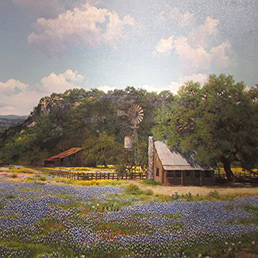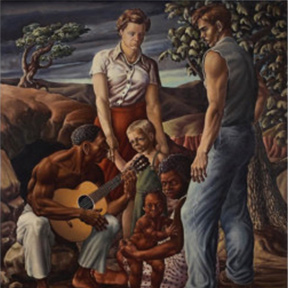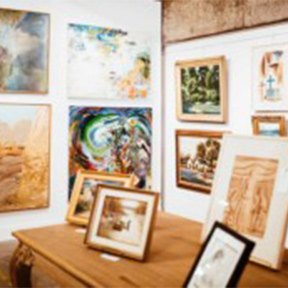- (214) 720-4044
- info@daviddike.com
- Mon - Fri: 10 am - 5 pm
Castellon, Federico Cristencia
Federico Cristencia Castellon
(Am. 1914-1971)
Federico Castellon was only seven years old when his family immigrated from Almería, Spain to Brooklyn, New York. He began sketching at an early age; imaginative drawings being one of the few outlets of expression available to Castellon, who’s English at the time was limited. Although his teachers recognized his talents as a draftsman, he remained largely self-taught. As a teenager he visited New York area museums to view the work of the Old Masters. After gaining a mastery of realism, Castellon became engaged in the study of modern artists, including Pablo Picasso, Georges Rouault, Diego Rivera, and Giorgio DeChirico.
Shortly after graduating from Erasmus High School, he completed a mural for the school based on the subject of arts and sciences. The mural, obviously informed by his interest in modern European movements, attracted critical attention and was exhibited in New York at Raymond and Raymond Galleries before being permanently installed in the school. Around this time, Castellon was introduced to Diego Rivera at a lecture given by the artist on his murals for Rockefeller Center. The older artist took an interest in the young man’s work and brought Castellon’s drawings to the attention of the Director of the Weyhe Gallery in New York, who subsequently gave the eighteen-year old Castellon his first solo exhibition.
In 1934, with Rivera’s help, Castellon was awarded a four-year fellowship sponsored by the Spanish Government to study art and travel throughout Europe. During this time, he studied painting and printmaking and exhibited his work alongside other Spanish and American artists in Paris and Madrid. In 1937, Castellon returned to New York and began experimenting with the medium of lithography. His work continued to attract attention and he was included in exhibitions at important American institutions, including the Museum of Modern Art, New York, the Whitney Museum of American Art, and the Art Institute of Chicago. In 1940 he received the first of two Guggenheim fellowships.
Although his formal education ended with high school, Castellon remained an avid reader and maintained an interest in psychology and philosophy. He became a United States citizen in 1943 and throughout the 1940s and 1950s, his work was informed by his travels abroad: to China with the U.S. Army; Italy on his second Guggenheim fellowship; and Paris and Madrid, where he moved his family for a brief period during the late fifties. During this time, he also began his teaching career and took on commissions from American periodicals, most notably, LIFE magazine.
Even though he worked in virtually every media, Castellon remains best known for his early graphic work, particularly his etchings, a medium in which he became a master. His prints and drawings from the early thirties represent the first examples of Surrealism created by an American; an astounding feat considering Castellon produced these highly original works before his travels abroad and before the Museum of Modern Art’s seminal exhibition, Fantastic Art, Dada, Surrealism was exhibited in New York.
Source: Askart.com





